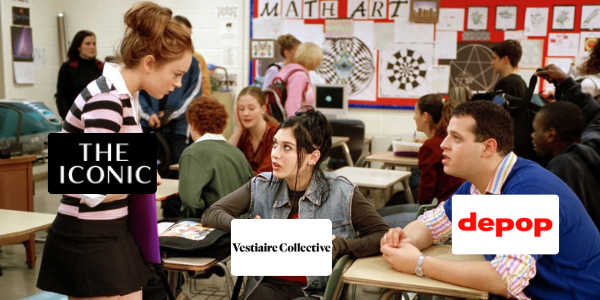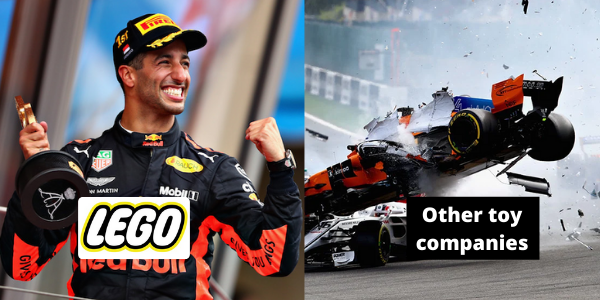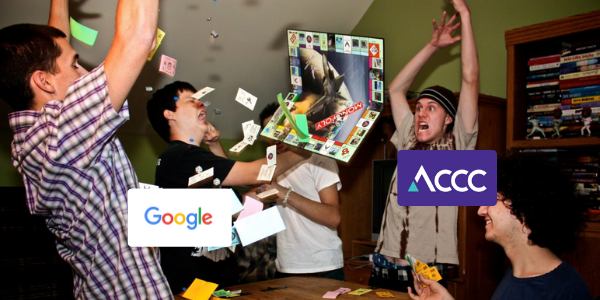Get smarter than your boss in 3 minutes with today's business news.
👗The Iconic will help you re-sell your clothes
🥫 Lego's got the secret sauce to profits
🛑 Google's ad tech biz is bad for customers, says ACCC
Hey hey Flux fam!
Have you been playing our Flux daily 1 min quiz?!
The lucky winner gets a $100 Bunnings voucher for their speedy and smart efforts. It's super easy.
Here's everything you need to know today - in under 3 minutes.
👗The Iconic will help you re-sell your clothes
🥫 Lego's got the secret sauce to profits
🛑 Google's ad tech biz is bad for customers, says ACCC
Amazon's brought out a home robot called Astro. It's got a camera and a microphone, and if that ain't weird enough...it can follow you around the house too.

Background: The Iconic is the Aussie online e-commerce site that stocks big brands like Bec & Bridge, Nike, Tommy Hilfiger and more. It's worth around $42 million.
What happened: The Iconic has partnered with the second-hand clothing reseller, Airrobe, to let customers register their items for resale as soon as they buy them. Talk about a quick change of heart!
What else: The Iconic will let its customers use its profesh photos and details, and it'll give them a suggested re-sell price. They're hoping this'll stop Aussies from putting resale into the 'too-hard basket', and actually get around the circular economy.
💡The circular economy is a system that tries to tackle climate change and waste...and it's become a hugely popular buzz term in the fashion world.
💡The idea is that at the end of an item's journey with one person, it either goes back to the manufacturer to be recycled into a new item, or resold onto a new owner.
💡Research shows that, over the last year, 33 million customers around the world have bought second-hand clothing items for the first time. And in 5 years. the market is predicted to double in value to US$77 billion. Wowwww.

Background: Lego (L-eh-go, L-ay-go...choice is yours), is the Danish toy company that manufactures those colour, interlocking plastic bricks that you can turn into whatever creation you like.
What happened: The company is worth around US$7 billion, and it has around 700 stores across the world. Now, they have reported a double in its earnings in the first six months of this year.
What else: Thanks to its Star Wars building sets, model Colosseums and flower bouquets, Lego absolutely killed it. But the real MVP is some good ol' fashioned supply chain management.
💡While the whole world faced supply chain issues, Lego didn't.
💡In the early 2000s, Lego went through massive supply chain changes. They realised their biggest markets were in Europe and North America. So they plonked distribution centres close to Prague (for Europe customers) and Mexico (for North American customers).
💡This courageous move turned out to be a masterstroke. It meant that Lego didn't face the same logistics issues (i.e. shipping and deliveries) as other companies during COVID. And that's why Lego outpaced the toy industry in all major markets.

Background: Australia's competition watchdog, AKA the ACCC, has released a report that shows Google's advertising technology business is squashing competition.
What happened: In 2020, more than 90% of digital ads had passed through Google at least once. And the ACCC reckons it’s harming publishers, it’s harming advertisers and its even harming consumers - so pretty much everyone except Google itself.
What else: The ACCC reckon that it’s all due to Google’s vertical integration in the ad space. They own publishers, ad tech platforms and advertisers. As a result, the ACCC wants more power to write some new regulations around how the ad tech sector should work in Australia.
💡Vertical integration is when a company owns each stage of its production process... rather than relying on 3rd party contractors or suppliers.
💡Let's see how it works in the chocolate industry:
These roles are generally performed by separate companies. But if these parts of the supply chain were all performed by one company, it would be vertically integrated
💡There is also a vertical integration for the ad tech industry - and Google owns it all. Since Google has its finger in all parts of the supply chain, it has a LOT of power to manipulate the pricing and exclude competitors.
Sign up for Flux and join 100,000 members of the Flux family